Table of Contents
Purpose
The purpose of this document is to explain the various steps required in configuring a remote access VPN on a Vyatta appliance.
Vyatta Configuration
The Vyatta configuration steps are pretty straight forward. You enable the outside interface with IPSEC, the IP pool, along with the secret passphrase and usernames and passwords, then your good to go.
set vpn ipsec ipsec-interfaces interface <OUTSIDE PUBLIC INT> set vpn ipsec nat-traversal enable set vpn ipsec nat-networks allowed-network 0.0.0.0/0 set vpn l2tp remote-access outside-address <OUTSIDE PUBLIC IP> set vpn l2tp remote-access client-ip-pool start <x.x.x.x> set vpn l2tp remote-access client-ip-pool stop <x.x.x.x> set vpn l2tp remote-access ipsec-settings authentication mode pre-shared-secret set vpn l2tp remote-access ipsec-settings authentication pre-shared-secret <passphrase> set vpn l2tp remote-access authentication mode local set vpn l2tp remote-access authentication local-users username test password abc123
Client Configuration
In terms of the configuration steps required on the client side. The steps required to configure a Windows based machine (in this case Windows 7) are shown below.
1. First initiate the wizard.
2. Next, add the public IP f your Vyatta device.
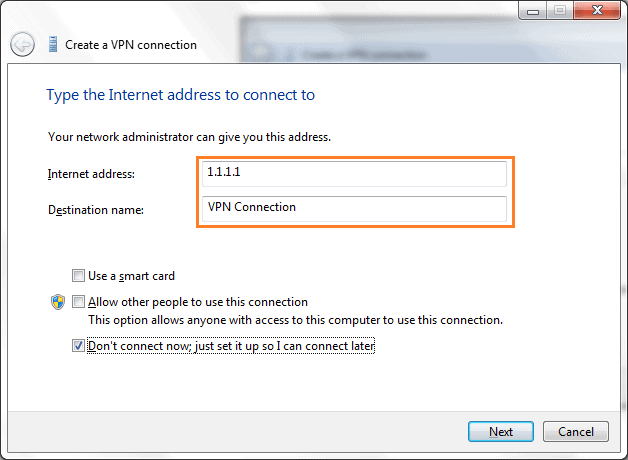
3. Next, add your username and password.
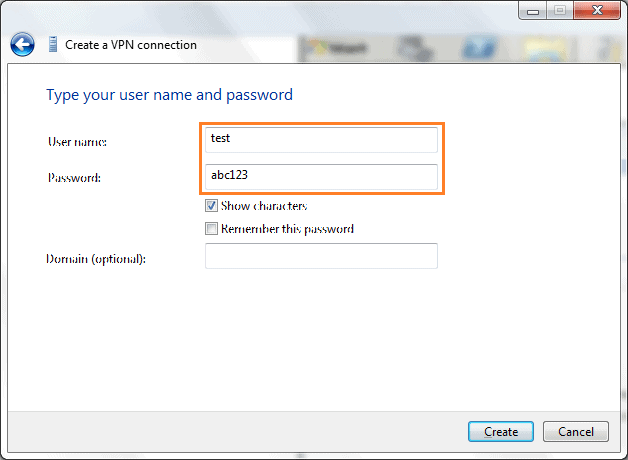
4. Click ‘Connection Now’.
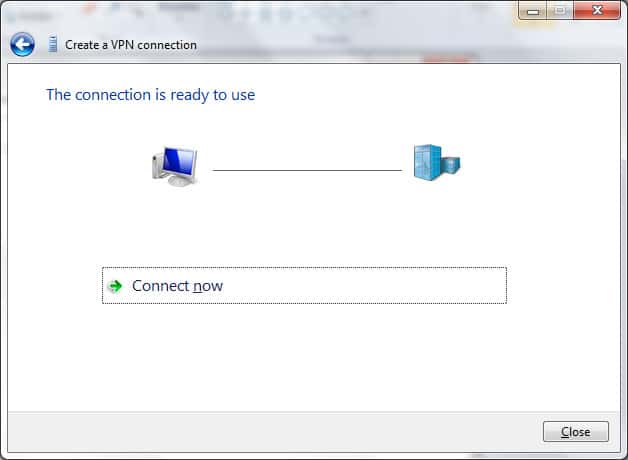
5. Then, go into the available/connected networks and client the recently added ”VPN Connections’.
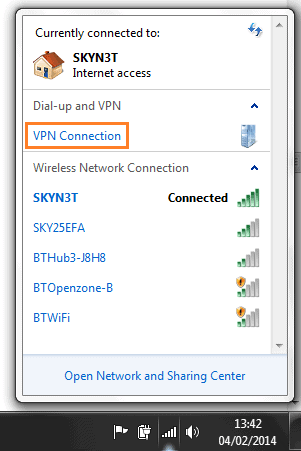
6. Next, change the ‘Type of VPN’ to what is shown below. Then click ‘Advanced Settings’, and add your secret passphrase.
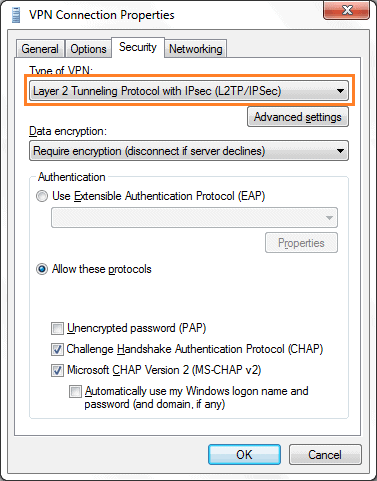
Split Tunneling
By default split tunnelling isn’t enabled. Meaning that all traffic from the client will be sent down the VPN tunnel. To enable split tunneling follow the following steps.
- Go to Control Panel / Network Connections.
- Right-click on your Vyatta VPN connection, then click Properties.
- Click Advanced. Uncheck the “Use default gateway on remove network” checkbox.
- Then click OK three times.
Troubleshooting
The main troubleshooting command is shown below. This allows to see the user that is logged in along with the sent and received packets.
vyatta@lab:~$ show vpn remote-access Active remote access VPN sessions: User Proto Iface Tunnel IP TX byte RX byte Time ---- ----- ----- --------- ------- ------- ---- felix001 L2TP l2tp0 10.192.1.0 74 39.4K 01h08m35s
- How to Configure a BIND Server on Ubuntu - March 15, 2018
- What is a BGP Confederation? - March 6, 2018
- Cisco – What is BGP ORF (Outbound Route Filtering)? - March 5, 2018
Want to become a networking expert?
Here is our hand-picked selection of the best courses you can find online:
Cisco CCNA 200-301 Certification Gold Bootcamp
Complete Cyber Security Course – Network Security
Internet Security Deep Dive course
Python Pro Bootcamp
and our recommended certification practice exams:
AlphaPrep Practice Tests - Free Trial
